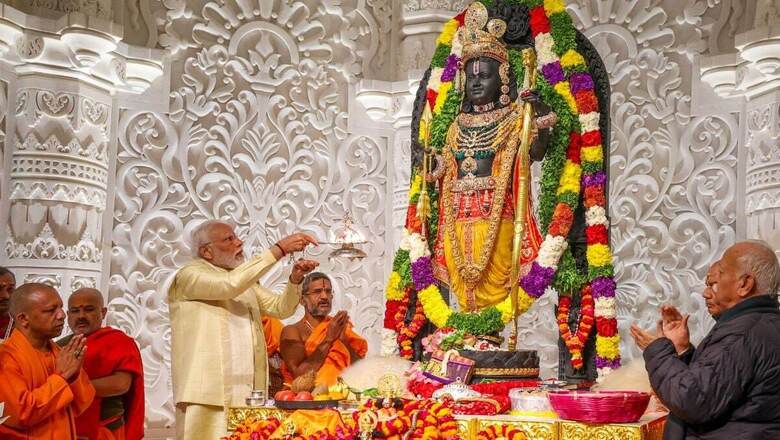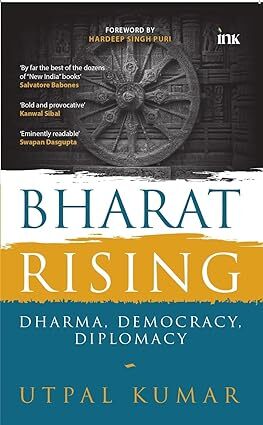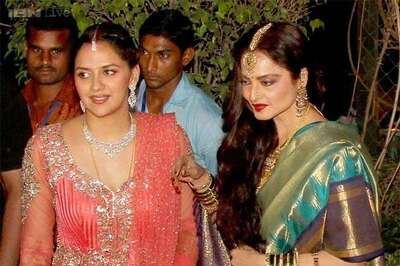
views
I rarely use a highlighter while reading a book to mark passages that strike me as particularly perceptive or ones that I could reference later or quietly plagiarise. Utpal Kumar’s Bharat Rising: Dharma, Democracy, Diplomacy is such a book. It is about how the last 10 years have changed India in many subtle ways to create a confident nation rooted in its magnificent heritage that was deliberately hidden from its people.
The book examines how Bharat that is India has changed since Narendra Modi came to power in 2014, going back into history and recounting our historical follies. Utpal boldly claims that Bharat had a “false start in 1947” and that “while the contours of the transformation since 2014 are still being drawn, it is obvious that Bharat under Modi has truly and categorically entered the Second Republic, saying a final goodbye to the Nehruvian ethos”. Much of what he writes may have been known or guessed at by a few of us, but never before have all the facets been strung together so cogently, supported by sturdy facts.
Governments may have come and gone, Congress or non-Congress, but the power elite of India—often referred to as Lutyens’ Delhi—remained cozy in their privilege and entitlement, most of it drawn from the British Raj and their closeness to the Nehru-Gandhi dynasty. They spoke perfect English, dined at the India International Centre, went for morning walks in the Lodhi Gardens, lived lives of luxury—not due to any merit but through pedigree and patronage—and publicly proclaimed to be socialist. Atal Bihari Vajpayee and Manmohan Singh may have appeared to be outsiders, but in reality, they were not. Modi is the first prime minister who would have no truck with this class and systematically marginalised it.
Beyond all the numbers of economic growth and effective welfare schemes, Utpal writes, Modi’s main contribution has been to awaken the spirit of Bharat as a civilisational state, not just another map on a world atlas. But there’s a long way to go, he warns. On temple restorations, he writes: “Prime Minister Modi’s battle is two-pronged: physical and psychological… (He) has been doing a good job on the physical aspect of the battle, bringing some of the most sacred Hindu shrines out of the area of darkness. These temples have been an obvious sign of a wounded civilisation waking up to its glorious past. But the psychological battle is yet to resume in the true sense of the term.”
This is because the Hindu mind has been colonised for many generations now, not least by those whom Arun Shourie sarcastically called “eminent historians”, who portrayed the victims as the culprits and whitewashed brutal invaders and rulers, even though they themselves had their courtiers write about the delight of desecrations and mass slaughter. We need a complete re-narration of our history to replace the lies that leftists have foisted over the decades, carrying on from exactly what the British Raj left off, from the Aryan Invasion Theory to the benevolence of Aurangzeb.

Utpal provides many examples—some of them little-known—of how Jawaharlal Nehru, in the name of secularism, went out of his way to subvert Hindu rights (“Hindu” includes, Buddhists, Sikhs and Jains) while allowing free rein to every medieval practice of another faith. There was much controversy a year ago when the Sengol was placed next to the Speaker’s chair in our new Parliament. But Nehru himself was “coronated” with the Sengol by high priests who rubbed holy ash on his forehead right before his “tryst with destiny” speech.
“The free nation that was born on 15 August 1947 was unapologetically Hindu,” writes Utpal. “And Nehru went with the Hindu mood of the nation, but later, when he became all-powerful, he conspired with his progressive and leftist minions to steal the innate ‘Hindu-ness’ of the country.” The ‘secular state’ took over Hindu temples, while other religions were allowed to use their places of worship in any way they pleased.
But temples in India had never been just places of worship. Traditionally, they had provided succour to the needy, been a check on government excess and were also intellectual, educational and cultural hubs. Could many of our great art forms—for example, Bharat Natyam—have ever emerged without the freedom, liberal kindliness and status of our temples? With this one move, Nehru sucked out the traditional dynamism of Hindu society and made it dependent on the mai-baap sarkar.
Let me not bore you any more about how Nehru turned a civilisational opportunity into a loser nation with empty rhetoric that the developed world laughed at. In spite of Nehru’s adoration of the Soviet Union, Stalin refused to meet Indian ambassador Vijayalakshmi Pandit, who just happened to be Nehru’s sister, for months. Then Chinese premier Zhou Enlai told Henry Kissinger that India has “an inferiority complex”, and mentioned that at a tea party organised for him in Delhi by Nehru, his daughter Indira turned up in a Tibetan costume. Zhou found it hilarious. And it added to Mao Zedong’s contempt for Nehru and India. We know what happened subsequently.
That sort of stuff certainly won’t happen in New India or what Utpal calls the Second Republic. We don’t, as a nation, have an inferiority complex any more. We don’t call snake charmers to entertain visiting foreign dignitaries. Which Nehru did, in fact, when John F Kennedy came to Delhi.
Utpal has very clear views on how India should act in the current volatile geopolitical situation. Much of what he says should be obvious to any fool, except that not many people dare to say it out loud. Anti-Indianism is Pakistan’s raison d’etre. All those “peace talks” over the decades achieved nothing. Uri and Balakot changed the conversation. We should stay mum and let Pakistan become a “poor, weak and crawling” country.
One must understand how China thinks. The Chinese way of thinking is unique and derives from several millennia of beliefs and treatises and war stories. It is not very difficult to grasp, at least to the Indian mind, the principles from which the whole Chinese personal, societal, moral and strategic infrastructure grows. These principles may seem weird to our Anglicised minds, but given the infinite four-dimensional space that Indic philosophy offers us, we should be able to strategise and respond to the threat adequately. The boundaries of our thoughts are much wider than theirs.
In the last 10 years, the mentality of a nation of 1.5 billion people has changed or is definitely changing. There is no inferiority complex, except for the bitterness of the ousted Lutyens’ elite moaning on international TV channels, and Western think tanks (Pakistan, a failed state by every parameter, is higher on the “Happiness Index” than India) or hiring a hall in a Western university to blabber about artificial intelligence and caste census (You or I can also pay the standard fee, hire the same hall and have a discussion on why the sea is boiling hot and whether pigs have wings).
That is what Utpal’s deeply-researched and deeply thoughtful book is about—how India is changing and why. We all go along with the tides of time, without thinking much about causation, events or why our environment feels fresh and new. We are not even halfway through the story, but Bharat Rising tells us where we are, where we could have been but did not, and where we can be and how we can get there.
Read this book to get a lucidly written view of a huge and complex nation rejecting the path it had been forced to tread for decades and embracing modernity while rediscovering the ancient values that defined it. And read the endnotes too. Bharat Rising is that rare book where the endnotes are very interesting—they provide a lot of anecdotes that tell you how things were till 10 years ago and how far we have come since then.
The reviewer is former managing editor of Outlook, former editor of The Financial Express, and founding editor of Outlook Money, Open, and Swarajya magazines. He has authored books such as ‘The IITians: The Story of an Extraordinary Indian Institution and How its Alumni Are Reshaping the World’, ‘Fallen Angel: The Making and Unmaking of Rajat Gupta’, and ‘The Last War’. He tweets @sandipanthedeb. The views expressed in this article are those of the author and do not represent the stand of this publication.

















Comments
0 comment